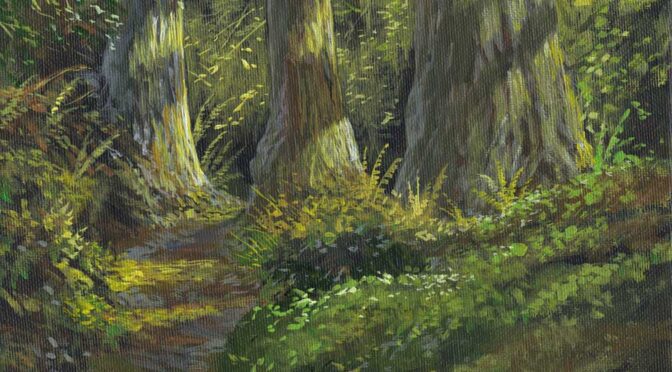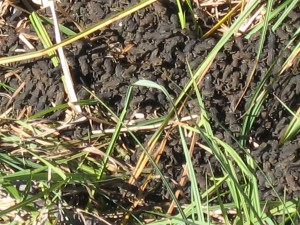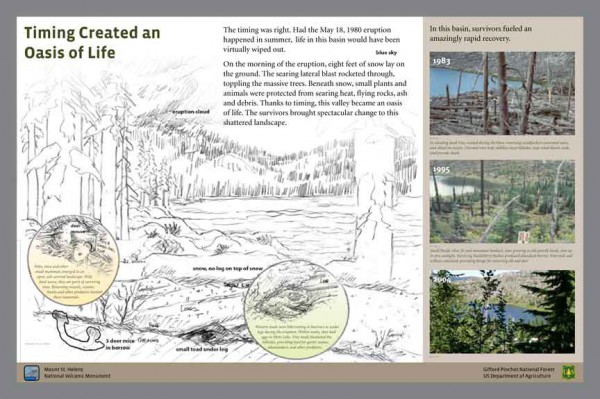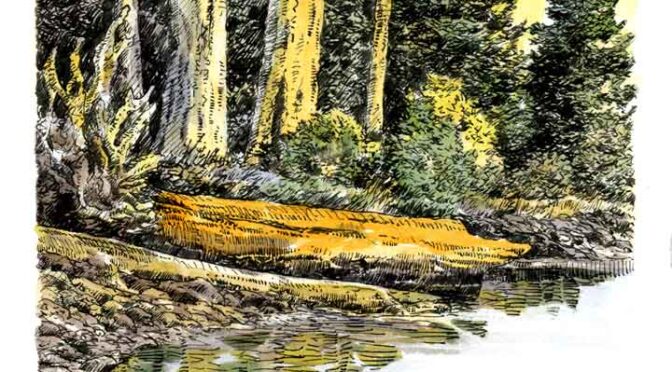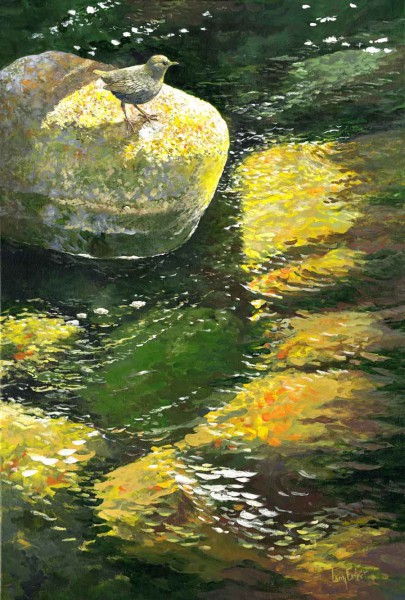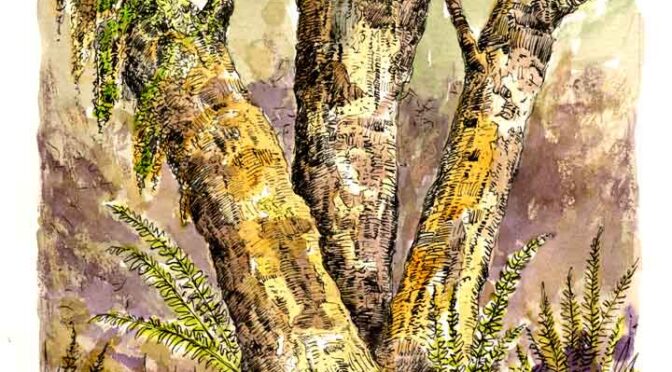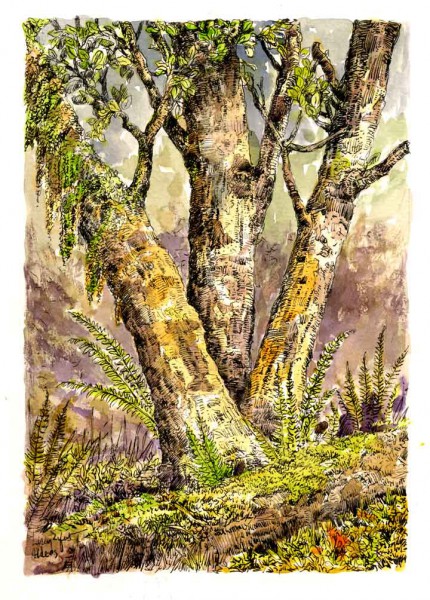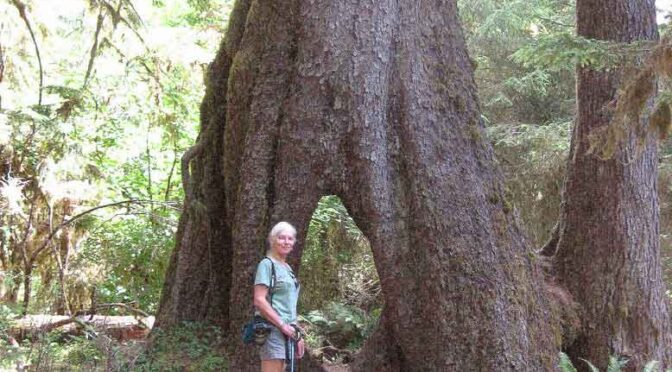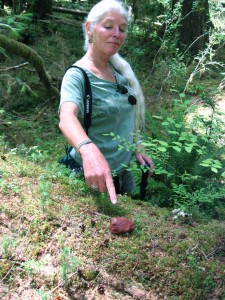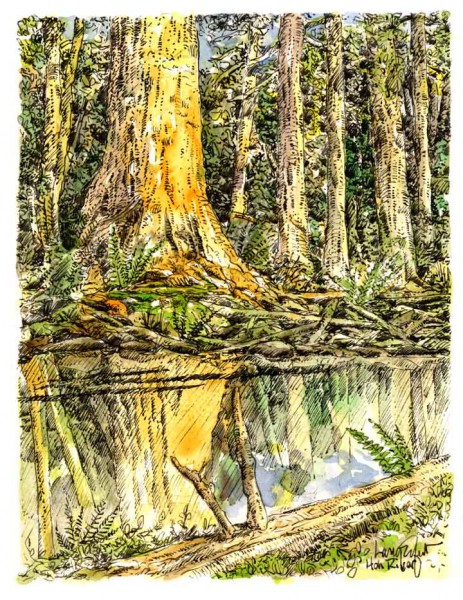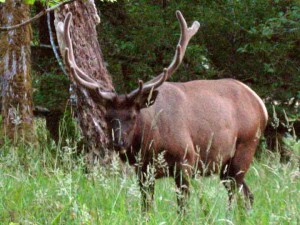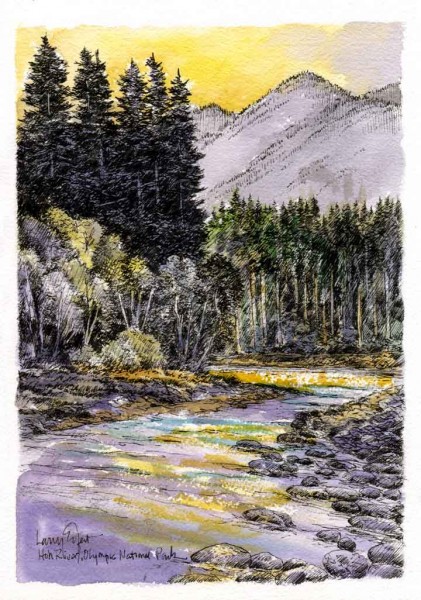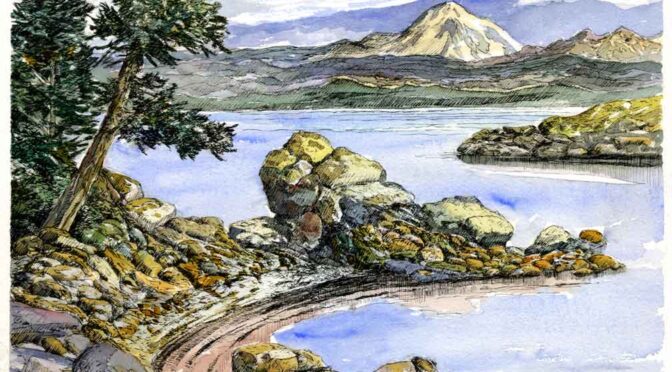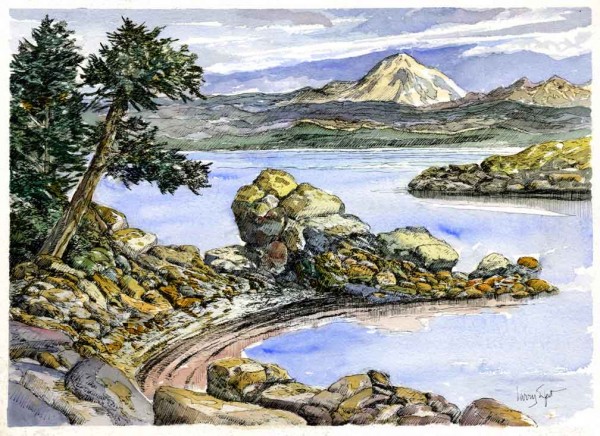Another sweet old-growth trail painting today. How many of these trails have I been on? I think it’s some genetic throwback to a distant past that compels me to hike just one more of these trails, and then paint the darned thing later (it’s two for one – first the trail experience and then reliving that pleasure in a painting). This one starts on Lake Crescent in Olympic National Park, goes gently upslope following the creek past Merrymere Falls (pretty cool in itself) and onto the flanks of Mount Storm King. About two miles out, the trail goes over a little hump past some pretty impressive trees – which is where the inspiration for this painting occurred. Don’t go up there looking for it – these things are never even close to what they actually look like. There I was, waiting for Nancy to photograph some spring flowers – knees in the dirt, head in the ferns as usual. And while I stood there soaking in the forest, I just fell in love with the place – the gentle flow of the trail, the glow of light on a few leaves, the agelessness of it all.
This ORIGINAL painting is varnished acrylic on linen canvas, 8″ x 10″ and $320 unframed.
A custom wood frame is about $25 and shipping adds just a bit more depending on your zone or if you take the frame. This is the original painting, NOT a print.
Email us for details.
Thanks for reading this week.
Larry Eifert
Click here to go to the online blog this was to.
Click here to go to our main website – packed with jigsaw puzzles, prints, interpretive portfolios and lots of other stuff.
Click here to check out what Nancy’s currently working on with her photography.
